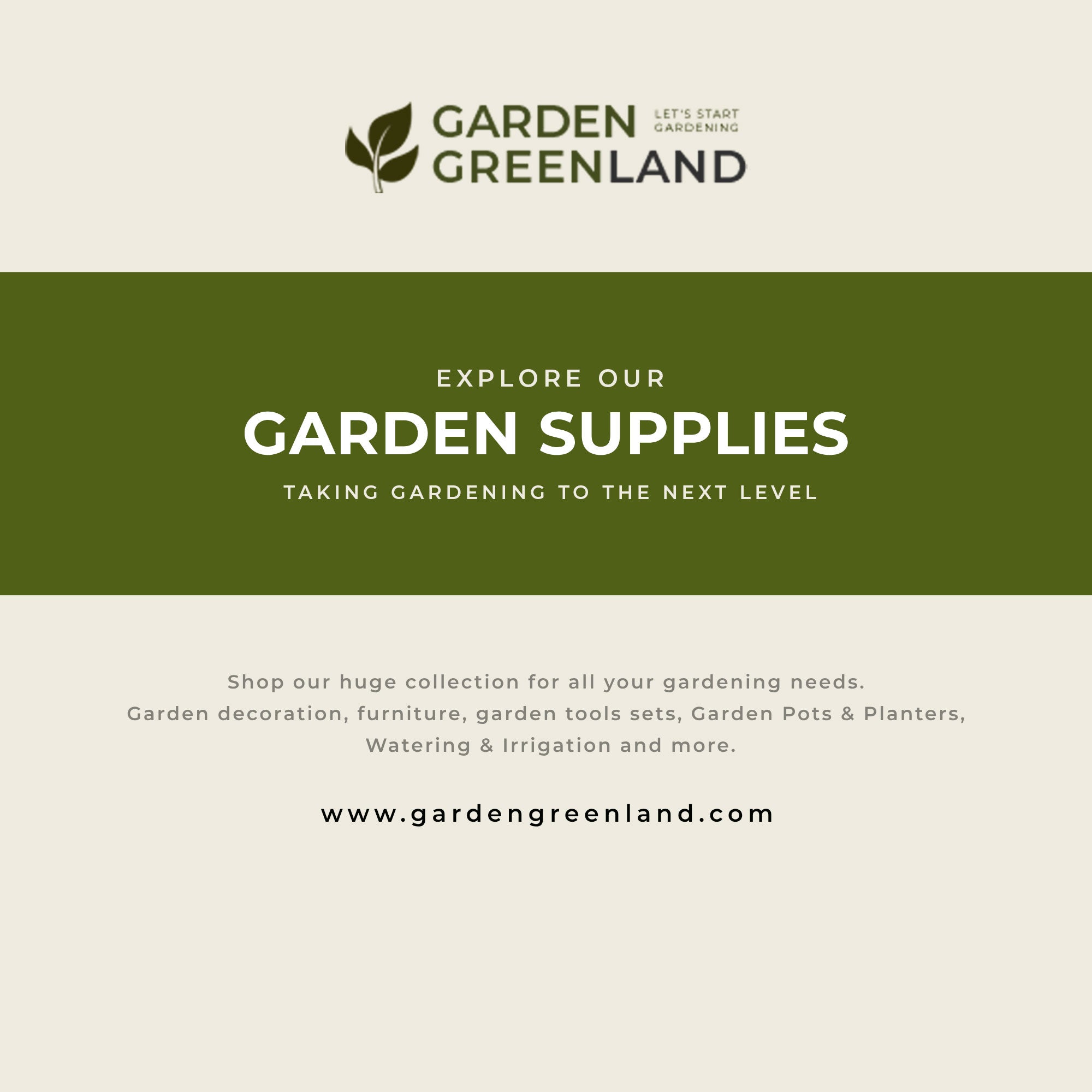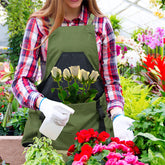How to Grow Potatoes in a Bag: A Complete Guide
Table of Contents
- Introduction
- Why Grow Potatoes in a Bag?
- What You Need to Get Started
- Step-by-Step Guide to Growing Potatoes in a Bag
- Conclusion
- FAQ
Introduction
Have you ever considered growing your own food but felt limited by space? You're not alone! Many gardening enthusiasts struggle with space constraints, especially when it comes to cultivating larger crops like potatoes. But what if we told you that you could grow delicious, fresh potatoes right in a bag? Yes, you read that correctly! Growing potatoes in a bag is a revolutionary approach that allows anyone—whether you have a sprawling garden or just a small balcony—to experience the joy of homegrown produce.
This method not only maximizes limited spaces but also simplifies the growing process and enhances your connection with nature. At Garden Greenland, we are passionate about empowering individuals to embrace their green thumbs, which is why we are excited to share our expertise on this delightful gardening technique. By the end of this blog post, you’ll be well-equipped to cultivate your very own potatoes in a bag, and we’ll introduce you to premium gardening products that can elevate your gardening experience.
In this guide, we will cover everything from selecting the right seed potatoes to the detailed steps for planting, caring for, and harvesting your potatoes. We’ll also share tips and tricks to ensure optimal growth and yield, making your potato-growing journey both rewarding and enjoyable. Together, we’ll explore this innovative gardening method that not only saves space but also yields delicious results.
So, are you ready to dig into the world of bag-grown potatoes? Let’s get started!
Why Grow Potatoes in a Bag?
Growing potatoes in a bag offers several advantages that traditional gardening methods may not provide. Here are some compelling reasons to consider this approach:
Space Efficiency
For those of us with limited outdoor space, potato bags present an ideal solution. These portable containers can be placed on patios, balconies, or even indoors, allowing us to grow our own food without the need for a large garden.
Easy Harvesting
One of the most significant benefits of using a bag is the ease of harvesting. When the time comes to collect your potatoes, simply empty the bag onto a surface, and you can easily retrieve your harvest without the labor of digging in the ground.
Improved Soil Conditions
Potatoes thrive in loose, well-drained soil. Using a bag allows us to create the perfect growing medium without worrying about our native soil's quality. This also reduces the likelihood of soil-borne diseases that can affect potato crops.
Versatility
Potato bags are incredibly versatile. They come in various sizes, allowing us to grow a few plants or many, depending on our preferences and available space. Additionally, we can experiment with different potato varieties to discover which ones we enjoy most.
Sustainability
By growing potatoes in bags, we can control the materials used, opting for eco-friendly options. At Garden Greenland, we offer a selection of premium gardening products, such as biodegradable grow bags, that align with our commitment to sustainable gardening practices.
What You Need to Get Started
Before we dive into the step-by-step process of growing potatoes in a bag, let’s gather the materials you’ll need. Here’s a comprehensive list:
Essential Supplies
- Seed Potatoes: Choose certified seed potatoes from a reputable garden center or online supplier. Look for varieties that are known for being disease-resistant and well-suited for bag cultivation. Fingerling potatoes are a fantastic choice for this method due to their small size and robust flavor.
- Grow Bag: We recommend using a quality grow bag, ideally made from breathable fabric. A 50-quart bag is perfect for growing about six to eight seed potatoes, while larger bags can accommodate more. Our premium grow bags are designed specifically for this purpose and promote healthy root development.
- Growing Medium: A mixture of coconut coir and compost works exceptionally well for growing potatoes. This combination provides a nutrient-rich, moisture-retaining environment that allows potatoes to thrive.
- Watering Can or Hose: Maintaining proper moisture levels is crucial for potato growth. Having a reliable watering method will ensure your plants receive the hydration they need.
- Fertilizer (Optional): While potatoes can grow well in nutrient-rich compost, you may choose to add an organic granular fertilizer to promote even better growth.
Optional Supplies
- Garden Tools: Simple tools like a trowel and gloves can make the planting and harvesting process easier.
- Mulch: Using mulch can help retain moisture and suppress weeds in your potato bag.
With your supplies in hand, let’s move on to the planting process!
Step-by-Step Guide to Growing Potatoes in a Bag
Step 1: Choose Your Seed Potatoes
Selecting the right seed potatoes is the first and most crucial step. Look for certified seed potatoes that are free from disease and have visible "eyes" or buds. Popular varieties for bag growing include:
- Yukon Gold: A versatile and flavorful yellow potato.
- Red Bliss: A smooth-skinned red potato that holds its shape well.
- Fingerlings: Small, colorful potatoes that offer a unique taste and texture.
Step 2: Prepare Your Growing Medium
To create the ideal growing environment for your potatoes, mix equal parts coconut coir and compost in a large tub or bucket. This blend provides a loose, aerated structure that retains moisture without becoming soggy.
Step 3: Fill the Grow Bag
- Begin by folding down the top edge of your grow bag to create a cuff.
- Add about 3 to 4 inches of the prepared growing medium to the bottom of the bag.
- Water the soil until it is evenly moist, but not saturated.
Step 4: Plant the Seed Potatoes
- Place your seed potatoes on top of the soil mixture, ensuring they are spaced apart to allow for growth. Typically, six to eight seed potatoes fit well in a standard 50-quart grow bag.
- Cover the seed potatoes with another 2 to 3 inches of the growing medium, ensuring they are completely buried.
- Water again lightly to encourage the potatoes to establish.
Step 5: Water and Wait for Growth
Keep the soil consistently moist throughout the growing season, especially during dry spells. You should see green shoots emerge within one to two weeks. This is an exciting time as your potato plants start to grow!
Step 6: Hill as They Grow
As your potato plants grow taller, you’ll want to “hill” them. This involves adding more of your growing medium around the base of the plants to encourage more tuber development. Here’s how to do it:
- Once the plants reach about 6 inches tall, carefully add more of the growing medium to cover the stems, leaving only the top leaves exposed.
- Repeat this process every week or two, keeping the soil level rising as the plants continue to grow. This not only supports the plants but also promotes the growth of additional potatoes along the buried stems.
Step 7: Monitor and Maintain
Throughout the growing season, it’s essential to monitor your potato plants for signs of pests, diseases, or nutrient deficiencies. Regularly check the moisture level in the bag to prevent it from drying out, especially during warm weather.
Step 8: Watch for Flowers
In about six weeks, you’ll notice flowers starting to bloom on your potato plants. This is an indication that your plants are forming tubers underground. If you prefer new potatoes, you can harvest them at this stage. However, for larger, mature potatoes, allow the plants to continue growing.
Step 9: Harvesting Your Potatoes
Once the foliage begins to yellow and die back, it’s time to harvest your potatoes. Here’s how to do it:
- Stop watering your potato plants a week before harvesting to allow the skins to harden.
- Gently tip your grow bag on its side and pour out the contents onto a surface.
- Dig through the soil with your hands to collect your homegrown potatoes.
- Allow the harvested potatoes to cure in a cool, dark place for a few days to toughen their skins, making them better for storage.
Bonus Tips for Successful Potato Growing
To ensure the best results, here are some additional tips for growing potatoes in bags:
- Rotate Your Crops: To prevent disease buildup, avoid planting potatoes in the same bag or area every year. Rotate your crops to different bags or locations.
- Experiment with Varieties: Try growing multiple potato varieties in separate bags for a diverse and flavorful harvest.
- Be Mindful of Pests: Keep an eye out for common potato pests, such as the Colorado potato beetle. Inspect your plants regularly and take action if you notice any infestations.
- Use Quality Products: At Garden Greenland, we offer a range of gardening products specifically designed to enhance your gardening experience. Check out our Garden Tools Collection and Garden Equipment Collection to find the essentials you need.
Conclusion
Growing potatoes in bags is not only a practical solution for limited space, but it also opens up a world of gardening possibilities for everyone. By following our step-by-step guide, you can enjoy the satisfaction of harvesting your own homegrown potatoes, all while nurturing your connection to the earth.
This method is perfect for gardeners of all skill levels, making it accessible for beginners and experienced growers alike. We encourage you to embrace this innovative gardening technique and experience the rewards firsthand.
If you're ready to start your potato-growing journey, visit our Garden Buildings Collection to find the perfect space for your gardening endeavors and explore our range of premium gardening products designed to enhance your experience.
Together, let’s cultivate a greener future and enjoy the fruits of our labor—one potato at a time!
FAQ
Q: Can I use regular potatoes from the grocery store as seed potatoes?
A: While you can technically use grocery store potatoes, it’s best to use certified seed potatoes. These are disease-free and specifically bred for growth, ensuring better yields and healthier plants.
Q: How much sun do potato bags need?
A: Potatoes need at least 6 to 8 hours of direct sunlight daily for optimal growth. Choose a sunny spot for your potato bag, such as a patio or balcony.
Q: How often should I water my potato plants?
A: Keep the soil evenly moist, especially during hot summer days. You may need to water daily if the weather is particularly dry. However, avoid overwatering to prevent root rot.
Q: Can I grow other vegetables in bags?
A: Absolutely! Many vegetables can be grown in bags, including tomatoes, peppers, and herbs. This method is versatile and can accommodate various crops.
Q: What should I do with leftover soil after harvesting?
A: You can add leftover soil to your compost pile or use it in your garden beds. Just remember to rotate your crops to prevent disease buildup.
Now that you have all the information you need, why not take the plunge and start your potato-growing adventure today? Happy gardening!









